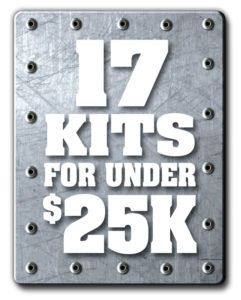 Aircraft can be expensive, everyone knows that. It’s part of the reason we elect to build our own—to do so for less than it costs to buy a new or used series-built design, to save us money on maintenance and to make the outcome uniquely ours. In a very broad sense, new aircraft kits have barely kept up with inflation and the pre-COVID-19 appreciation of certified aircraft. Improvements in manufacturing processes have partially offset the increase in the cost of the raw materials and, it should be said, many of the more prosperous kit companies are loathe to mess with a good thing. We have, as a result, a long list of familiar designs that have benefitted from years of development, builder feedback and other measures to make them not just better airplanes but also easier to build more accurately than ever before.
Aircraft can be expensive, everyone knows that. It’s part of the reason we elect to build our own—to do so for less than it costs to buy a new or used series-built design, to save us money on maintenance and to make the outcome uniquely ours. In a very broad sense, new aircraft kits have barely kept up with inflation and the pre-COVID-19 appreciation of certified aircraft. Improvements in manufacturing processes have partially offset the increase in the cost of the raw materials and, it should be said, many of the more prosperous kit companies are loathe to mess with a good thing. We have, as a result, a long list of familiar designs that have benefitted from years of development, builder feedback and other measures to make them not just better airplanes but also easier to build more accurately than ever before.
It’s tempting for us to follow what’s new and get sucked toward the high end of our sport, but with markets reeling and everyone looking to do more with fewer dollars, we felt it would be smart to reassess the less costly end of the spectrum. So the thought experiment arrived as a completed idea: What kit can you buy for $25,000 or less? Now, before you begin thinking that this is, already, a wholly too large sum for the start of your project, consider that the average vehicle (statistically, a Ford pickup truck) costs around $37,000. Sure, that F-150 can take you to Home Depot, but can it take you flying? Not more than once, anyway.

A few things before you begin to flip to our survey. First, in order to get under the limit, some designs are in their “base” configuration, meaning no quickbuild components, no factory-sourced common parts (like wheels and brakes) and, for the most part, no engine, prop, electrical, avionics, interior or paint. Traditional thinking has the completed price of an Experimental/Amateur-Built aircraft at roughly three times the base kit cost, putting our bogey at $75,000 complete at the high end of this range. It doesn’t have to be.
Next, consider your aircraft needs. For some builders, the desire to move toward the most sophisticated, capable end of the spectrum piles on cost, complexity and build time. Instead, at this price level for a new kitbuilt, we’re talking basic, fun airplanes meant for good-weather flying. Sometimes not very far from home. But, if you think about it, that’s where many of us started, making a light, simple airplane a welcome bit of homecoming for experienced pilots. The key here is to keep the endpoint of the project in mind—what does the design want to be? Avoiding mission creep is the only way to stay within a modest budget.
There are other benefits to maintaining simplicity. A smaller engine needs less fuel, and therefore needs less fuel capacity; that gives you payload and performance. A carburetor will be cheaper to own in the long run than fuel injection—simply from the parts count, to say nothing of the possibility of finding what you need in the used-equipment bin—and a fixed-pitch prop will exchange more limited performance for—again—low weight and cost. Every one of these decisions in the simple-versus-complex thought process brings follow-on effects, some that are merely additive, some exponential.
A lighter, simpler airplane also means easier shopping in the avionics aisle. Gyro system? Forget it. Multiple nav/coms? Um, no. ADS-B? Depends on where you’re based and where you want to fly. The trick to building a low-cost airplane is to actively scrutinize every line item. And then spend where safety depends on it: proper hardware, a solid (even if used) engine, proper restraints and thoughtful assembly.
Some of the company names you’re familiar with may not be here—even some that show up in our aircraft directory as currently in production. For this story, we once again reached out to check on the health of the suppliers and found some of them to be unresponsive. That doesn’t mean that they’re gone—we were in the midst of the coronavirus crisis, after all—but what it does suggest is that extreme caution is warranted before starting a design supported by them. The unfortunate truth is that creating kits for homebuilt aircraft rarely is lucrative. You may need a side business to support the fun side or, like Van’s, Zenith and a few others, do it at a scale that is profitable. We’re going to redouble our efforts to verify business condition as we set about updating our kit guide for 2021. (Prices listed are current as of April 2020.)
And last, you may notice some companies that we know are vital that are simply not represented. Kitfox has discontinued the Model IV, which was its only offering with a kit base at or below $25K. Same for RANS, which recently trimmed its model offerings, putting all of its models above the threshold. What does this really tell us? That constant improvement in basic kits—including more and doing more of the work at the factory, which the market has definitely responded to—has raised the price floor. With more builders demanding quickbuild options and willing to pay for them, you can hardly blame them.
Ace Aircraft Baby Ace
The Baby Ace, a long-distance cousin of the original Corben designs of the late 1920s, is in many ways the quintessential early homebuilt. This parasol-wing, open-cockpit “flivver” mounts a Continental C-85 up front, though several variants of Continental’s popular flat-four up to 120 hp will go, and provides a breezy 100-mph cruise. Top speed is just 10 mph greater, but it probably feels like a lot more with the wind rushing by your ears. With a gross weight of just 950 pounds, the Baby Ace is LSA legal. Three versions, the B, C and D are differentiated by landing-gear design and the shape of the tail.
Construction is a combination of CNC-cut steel-tube fuselage, some wood in the wings and otherwise conventional fabric covering. While the Baby Ace looks right as a taildragger, it can actually be built with a nosewheel. The options list is extensive, including your choice of fully welded fuselage shell, a pile of CNC-cut tubes or tack-welded tubes that you finish; the same choices exist for the tail feathers. You can also choose from a single 17-gallon fuselage tank or wing tanks totaling 23 gallons.
Aero Adventure Aventura HP
In the world of Experimental/Amateur-Built aircraft, there has always been a bit of crossover to ultralights. After all, our world didn’t start with the Lancair IV or the RV-10. And while the very light end of the market isn’t as robust as it once was, there are still some great options. The Aventura HP is among them. With the airframe kit starting at $22,000, the HP offers a choice of engines well suited to this modest point of entry: the Italian MZ 201 twin-cylinder, two-stroke of 45 hp; the MZ 202 of 60 hp; or the Rotax 582 of 64 hp. There are other Aventura models intended for the Rotax 912 or the AeroMomentum engine, but they’re more expensive kits.
This single-place, Dacron-covered amphib has a max-gross weight of just 750 pounds, which makes the most of the 60-ish horsepower on board. A 90-mph cruise speed will be sufficient to drop into local lakes or check out the nearby grass strip. The HP has a host of options available, including a carbon-fiber hull, a $2800 upcharge that still gets the whole airframe kit in under $25K.
Aeromarine-LSA Merlin
If you truly believe light is right, simpler is better and you have no need to take passengers along, the Merlin should be on your radar. The Czech design is largely conventional aluminum, with a cantilevered wing, single-seat cockpit and the option of either a Rotax 582 or the new Aeromarine 800cc V-twin engine with 60 hp. Performance is listed as 90–120 in cruise, variable by installed engine power. Max-gross weight is just 715 pounds, so it should not take much power to get the Merlin off the ground quickly.
Our own Paul Dye flew the airplane in 2016 and concluded that the “Merlin is what we think a Light Sport Aircraft should be—easy to maintain and fun to fly. With good handling qualities, it challenges the pilot to perfect their short landing technique, but in a friendly way that is low risk. The rugged construction should make it tolerant to the occasional mistake, and the cockpit layout is first-rate.”
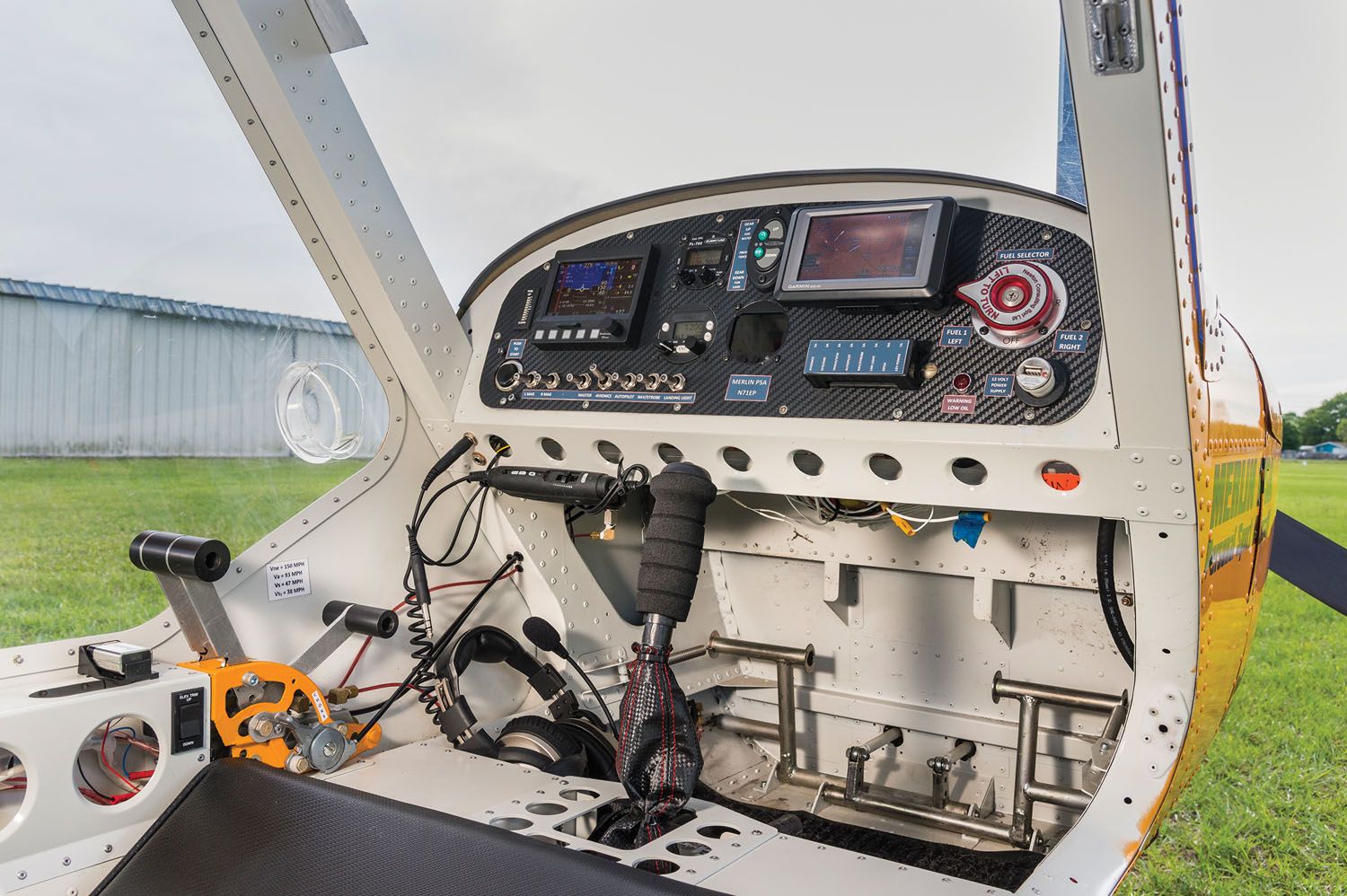
Airdrome Aeroplanes Sopwith Camel
We chose the Sopwith Camel for this exercise but most of Airdrome’s replicas could meet our under-$25K kit cost criteria. They follow the classic simpler-is-better approach but the designs, while appearing quite anachronistic, have more than a bit of ultralight in them. For example, the major structure is made up of aluminum tube riveted together via gussets. It’s covered with conventional, lightweight Dacron.
Three years ago, Sam Buchanan chronicled the build of an Airdrome Fokker, and his experience suggests these aircraft are really best aimed at those with previous building experience and the willingness to improvise as you go. (Kind of like the roots of homebuilding, if you think about it.) There’s a strong support group, but these are definitely not paint-by-numbers aircraft.
Performance is modest. We’re talking airplanes whose cues come from the very earliest days of aviation. With the big Rotec radial, the full-sized Camel is good for 93 mph. Another option is a large VW-based engine, which does help keep the overall costs down. You can build any of the Airdrome designs for relatively little money and you’re almost certain to have the only one of its kind on your airport.
CGS Hawk Aviation Hawk Plus
It may seem incongruous for ultralight designs to need more baggage capacity, but it’s less unusual than you might think. We as a society like to take our stuff with us. Like camping gear. A big cooler of Mountain Dew. It’s your call. With the Hawk Plus, what you get is basically a single-seat version of the twin-seat Hawk Arrow. With a base kit price around $15,000, it may be possible to build a complete Hawk Plus for near our kit-only cutoff point.
To do so, you’ll want to stick to the lower end of the Plus’s power spectrum, which runs from the 40-hp Rotax 447 all the way to the 65-hp HKS 700E four-stroke at the top; the Rotax 503 (50 hp) and Rotax 582 (65 hp) are also options. At 350 pounds empty against an 800-pound maximum-gross weight, the Hawk Plus has good payload. Cruise speed is listed as between 60 and 80 mph, so whatever it is you’re carrying in the back won’t need to get there too quickly. But, then again, when your only goal is simple aviating, speed is not always the prime concern.
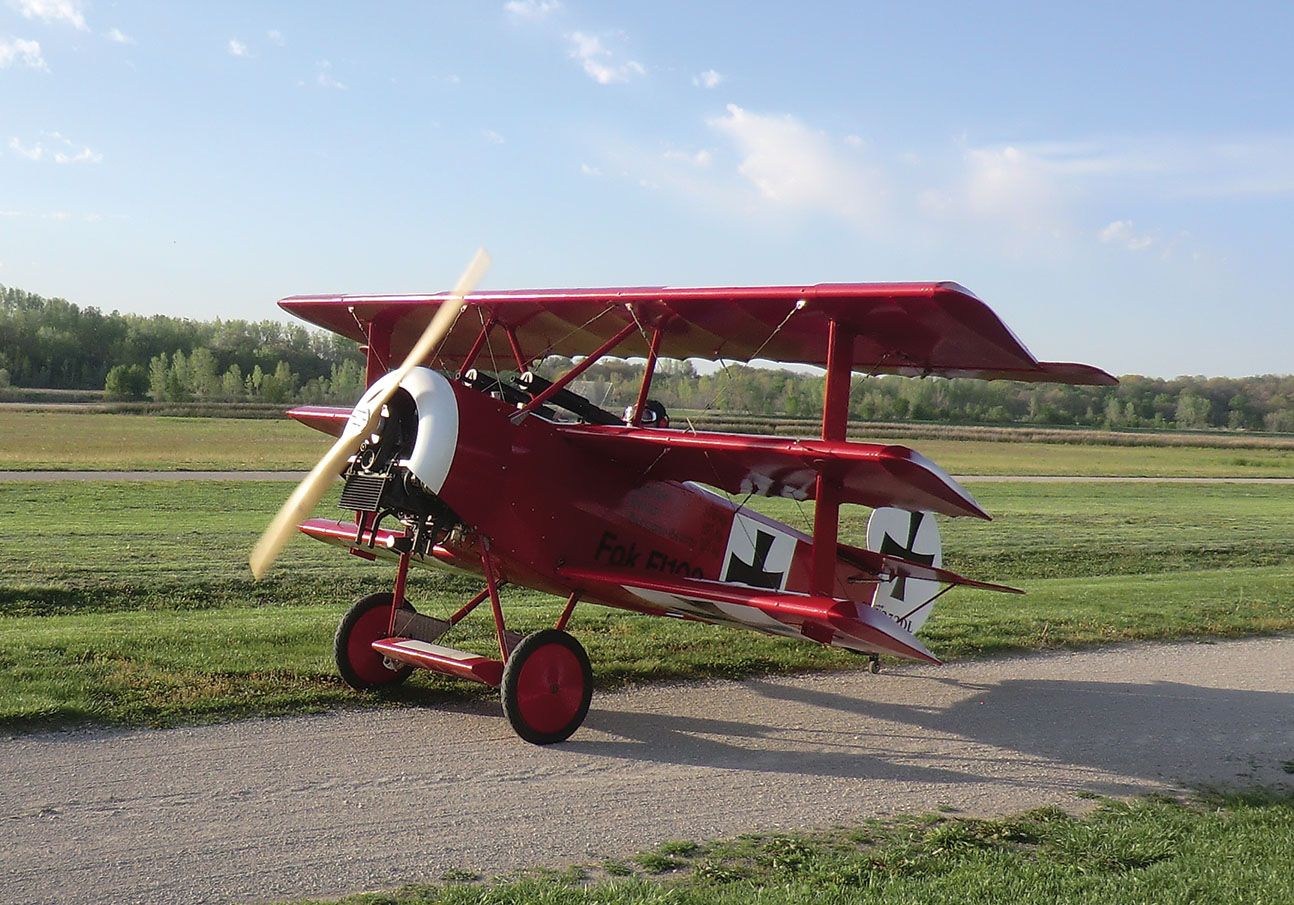
Fisher Flying Products Dakota Hawk
As with Airdrome Aeroplanes, Fisher could well take over most of the spots on this list—at least 14 of the 17! The two-place Dakota Hawk is one of those friendly, high-utility aircraft that’s quite human sized; in fact, it’s the largest of the Fisher designs. You get a wing of 128 square feet on an airplane with a gross weight of just 1150 pounds, which affords strong climb performance and short takeoff and landing rolls. What you want in a utility design.
The Dakota Hawk can use a number of popular engines, from the stalwart Continental C-90/O-200 family to the Rotax 912 and 912S, on up to the Jabiru 3300. On the 80-hp 912, the Dakota Hawk’s performance is listed as 90–100 mph cruise and a climb rate of 800 to 1000 fpm. Stall speed is listed as 35 mph, no surprise given the wing loading. And speaking of wings, the Dakota Hawk has the option of folding feathers. The airplane is primarily wood but comes with Dacron fabric and Stewart adhesives in base form. Quickbuild components are also an option.
Hummel Aviation H5
Morry Hummel’s designs have always been about elegant minimalism, and that doesn’t stop with the thoroughly updated H5. The metal H5 can be built as a tri-gear or taildragger, with up to 85 hp. Most are built with converted VW four-cylinder engines, which provide excellent performance: cruise of 100–130 mph, 800–1200 fpm climb, all with a 42 mph stall speed. Empty weight is quoted as 460 pounds, against a max-gross of 850 pounds.
Like many small manufacturers, Hummel doesn’t officially create full kits. As Paul Dye reported when he visited, “Customers can simply buy a set of plans and get started, or they can choose to purchase blanks (precut sheet metal), fully formed parts, or partially completed assemblies. The price list shows virtually every part of the airplane, so builders can buy what they don’t want to fabricate, and start from scratch on other components. Hummel can also supply full-sized Mylar templates, allowing those who want to source their own aluminum to have accurate patterns.” Some pre-punched components help reduce build time and increase accuracy. Dye praised the H5’s handling, too. “Control in all three axes was excellent—quick and responsive, yet not twitchy. I was surprised, in fact, at the harmonious nature of the controls in an airplane whose design is still fairly young.”
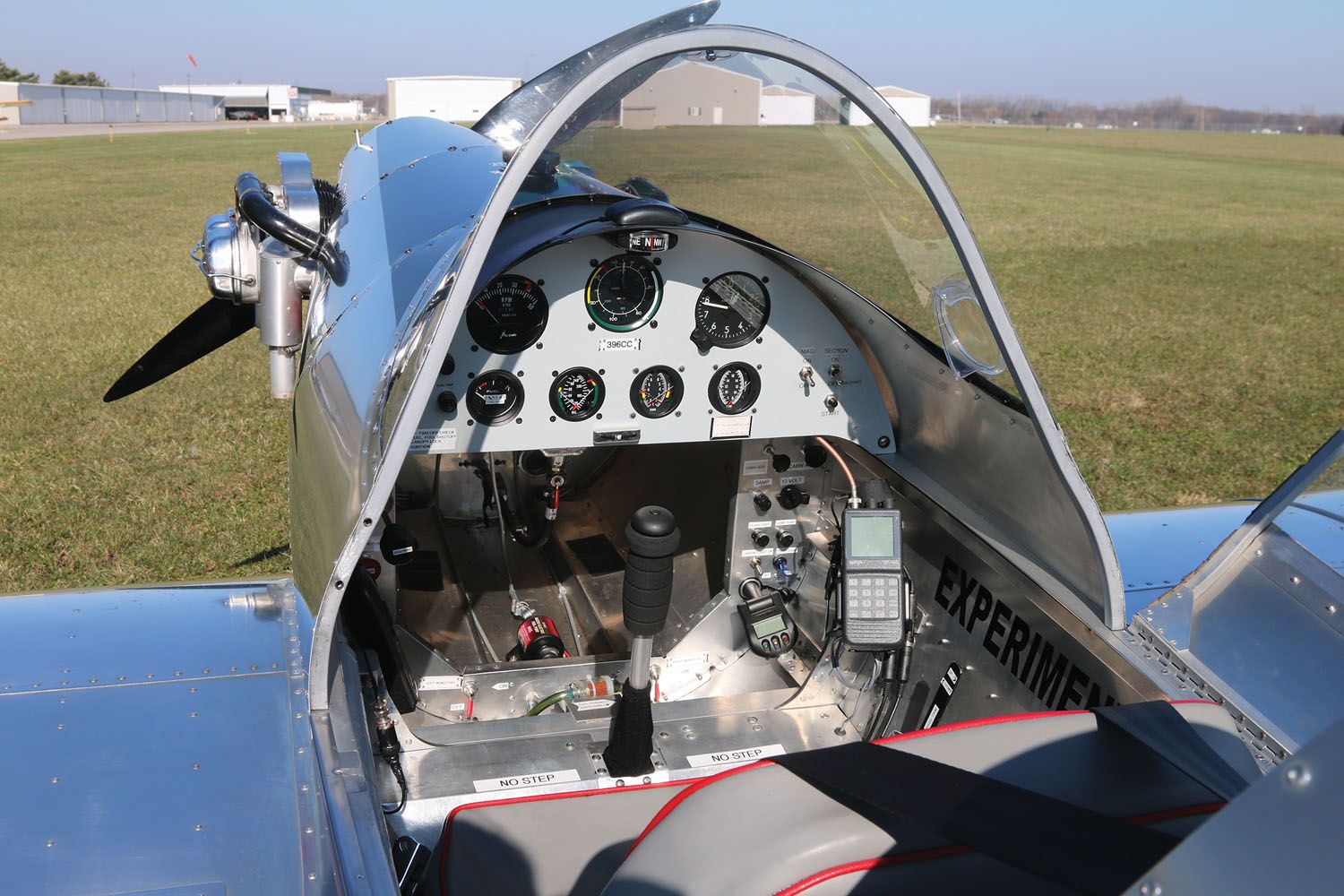
Just Aircraft Highlander
The Just Highlander squeaks under our $25K kit limit by a mere $100, but it offers a significant amount of standard equipment, including tires and brakes, full elevator trim, fabric and adhesive, seat harnesses and cushions. Many other designs at or near this price point don’t include any interior at all. Of course, Just offers a long list of options to add to your bottom line, but you can start with a fairly complete base kit and go austere from there.
The Highlander has the middle-sized wing area of the four Just models and can be built as a taildragger or tri-gear. Cruise with a Rotax 912S on the nose is 105 mph. Like its stablemates, the Highlander is LSA compliant with a 1320-pound max gross; its empty weight is a claimed 615 pounds for a 705-pound max payload. Normal fuel is 18 gallons but 26 is an option. The turbocharged Rotax 914 is an option, but it’s an expensive engine and therefore isn’t likely to be chosen by anyone concerned with a low kit price. We’ve been impressed with the Highlander and Just Aircraft overall; the side-by-side Highlander has good utility, impressively short takeoff and landing distances and solid handling.
Kolb Aircraft Company Twinstar Mark III
Kolb’s Twinstar is something of a veteran in this field, with a profile that might as well be in the dictionary under “lightweight fun.” The pusher design has side-by-side seating and the ability to place a wide range of engines up and behind the cabin. From the affordable Rotax 503 two-stroke, builders can decide to spend more on the 64-hp 582 or significantly more on the four-cylinder, four-stroke Rotax 912S. The Jabiru 2200 four-cylinder is also an option.
Considering the Twinstar weighs just 1150 pounds at max gross, the 160 square feet of wing is more than generous, making for a low stall speed (a claimed 38 mph) and 1100 fpm climb rate with the 912S and two aboard. Cruise speeds run from less than 70 mph with the 503 up to 80 with the 912. Truth is, that much wing is great for lift but you can’t really outrun induced drag.
The base price of $23,529 does not include dual controls, brakes, or a fabric covering kit. It does, however, include a fully welded chrome-moly steel-tube cage as the primary structure. Both the wings and tail fold for storage.
Murphy Aircraft Mfg. Rebel
While the massive Moose gets most of the ink for Murphy, the compact, two-seat Rebel remains a viable, low-cost alternative. Notable for its roomy cabin, the Rebel combines low empty weight and a high max-gross (1600 pounds for the bigger engines, 1450 with the Rotax 912) for good utility. The Rebel airframe is mostly pre-punched aluminum.
Speaking of engines, the range is from the 80-hp Rotax 912 up to the Lycoming O-320 of 150-hp, with the O-235 the recommended middle option. Arguably, the Lycomings can be the better value if you find good candidates on the used market. Of course, if you’re thinking of going on floats later on, the O-320 is your choice. While cruise speed goes up a mere 5 mph (from 115 to 120 mph) between the O-235 and the O-320, climb gains a lot.
Like most mature kits, there are many options. You can add to the standard fuel capacity of 44 gallons (up to 58), change from the Cub-style gear to a spring-gear style and change from flaperons to split flaps/ailerons. Go wild, eh?
nV Aerospace KR-2S
Perhaps one of the less-appreciated designs of the 1970s, Ken Rand’s KR was known for its speed and efficiency. Well, it’s still with us under the nV Aerospace company, which continues to make kits for the KR-2 and KR-2S. The S, for stretched, is our choice here for the extra room. The additional 16 inches in length help with cabin comfort with more head- and legroom than the KR-2.
Originally an all-wood design, the KR-2S has a combination of wood and fiberglass—those parts are premolded—and those changes reportedly improve build time to just 800 hours. Trike or taildragger configurations are available.
Performance is excellent for the power, typically provided by a converted 2180cc VW, the Corvair six-cylinder or the Continental O-200. The VW and Continentals are in the 80- to 100-hp range and bring the KR-2S up to a cruise of 150–180 mph. The KR’s speed comes from its compact dimensions, including an 82-square-foot wing.
Sonex Aircraft Sonex-B
Sonex has made the case of being one of the leaders in affordable aircraft and that’s not an idle boast. Three of the five current Sonex kits, the Sonex-B, the Waiex-B and the Onex, all have base kit prices below $25,000. What’s more, it says something about the completeness of the kits that upgrading to quickbuild status adds a comparatively low $7600. If you follow Sonex’s worksheet, a completed Sonex-B or Waiex-B could be in your grasp for less than $40,000.
How Sonex does this is really through simplicity of design. They’re all-metal airplanes with blind pull rivets and straightforward systems. On the Sonex-B, you can choose several engines, including the AeroVee 80- and 100-hp Turbo variants, the Jabiru 3300, ULPower’s UL260 or UL350 or the Rotax 912. The AeroVee is the value leader at $7600 for the 80-hp version. For the Sonex-B, cruise speed at 8000 feet is given as 150 mph with the AeroVee, or 20 mph greater with the 120-hp Jabiru 3300. Empty weight will vary with equipment, of course, but the Sonex-B should give you between 480 and 530 pounds of useful load, depending on engine; the 120-hp engine allows an 1150-pound max gross.
Worth mentioning, too, is that Sonex has developed a truly comprehensive accessory and options list for all its designs. You can even have the Sonex-B (or Waiex-B or Onex) as either a taildragger or trike (with the tri-gear versions slightly more expensive).
Sport Performance Aviation LLC Panther
If you’re getting the sense that low-cost airplanes have fewer seats, you’re catching on. The Sport Performance Aviation Panther is just such a solo endeavor, but it’s not meant to be dull. Designed with handling manners that bring to mind gentleman aerobatics, the Panther combines good looks, fine handling and critical build elements meant to keep the cost down but the fun up.
Paul Dye flew the airplane way back in 2014 and said of the handling: “The airplane stayed where I put it in both pitch and roll, with no tendency towards divergence. Elevator trim was more than adequate and suitably quick to establish whatever speed condition I liked. The airplane liked to stay at whatever angle of bank I desired—little additional stick force was required to keep it in—or to keep it from steepening.”
The base kit is $15,995 and that includes pre-drilled aluminum wing skins, a steel fuselage structure that’s been fully welded and powder coated, the canopy and landing gear legs. The Panther is built around the Corvair six-cylinder engine and that helps keep costs down as well; however, other engines in the 100–120 hp range can be used. Two Panther versions are available: one with 93 square feet of wing for LSA compliance and one with a smaller, 85-square-foot wing for better performance.
Thorp Central S-18
Classic designs don’t have to fade away. John Thorp’s T-18 is nearly 60 years old, but it continues on with Thorp Central as the S-18. Two inches wider and 5 inches longer than the original, the S-18 is an all-metal design with a distinctive “cranked” wing that’s flat across the center and angles up at the outboard sections for dihedral effect. It’s also unusual in the homebuilt world for having an all-flying stabilator tail—something Thorp had experience with during the development of the Piper Cherokee. Wing area is just 86 square feet, giving good wing loading for the 1600-pound max gross weight. A similarly sized Van’s RV-6 weighs the same but has more wing.
Performance is strong in this one. Engines from the Lycoming O-290 up to the O-360 can be accommodated, and an S-18 with a 180-hp engine and constant-speed prop is said to go 180 mph in cruise and climb at a strong 1500 fpm. Currently, the full kit runs just over $20,000 for the two-seat taildragger.
Van’s Aircraft RV-4
It may surprise you to learn that three of Van’s basic kits slip under our $25,000 limit. As you’d expect, the RV-3 and RV-4 do, but so does the most basic version of the RV-7 (not the -A model, though). For that, you’ll have to forego the quickbuild options on the 7. Van’s helps you with this decision on the RV-3 and -4, since there are no quickbuild options.
We’ve chosen the two-seat RV-4 here because, well, it’s a sentimental favorite. One of the purest flying airplanes ever made, it’s an intrinsically simple design that by its size and nature seems to encourage builders to keep it that way. Where the similarly tandem RV-8 tends to end up more complex—more powerful, faster, heavier and costlier—the RV-4 seems perfectly happy in its role as a fly-for-fun design. Perfectly contented with 150–160 hp, the RV-4 is amazingly efficient, doing better than 200 mph on fuel flows that mean 32 gallons of fuel is generous, not stingy.
That the RV-4 is still with us more than 40 years since its introduction says a lot about the design and the desire of builders to have this lightweight marvel.
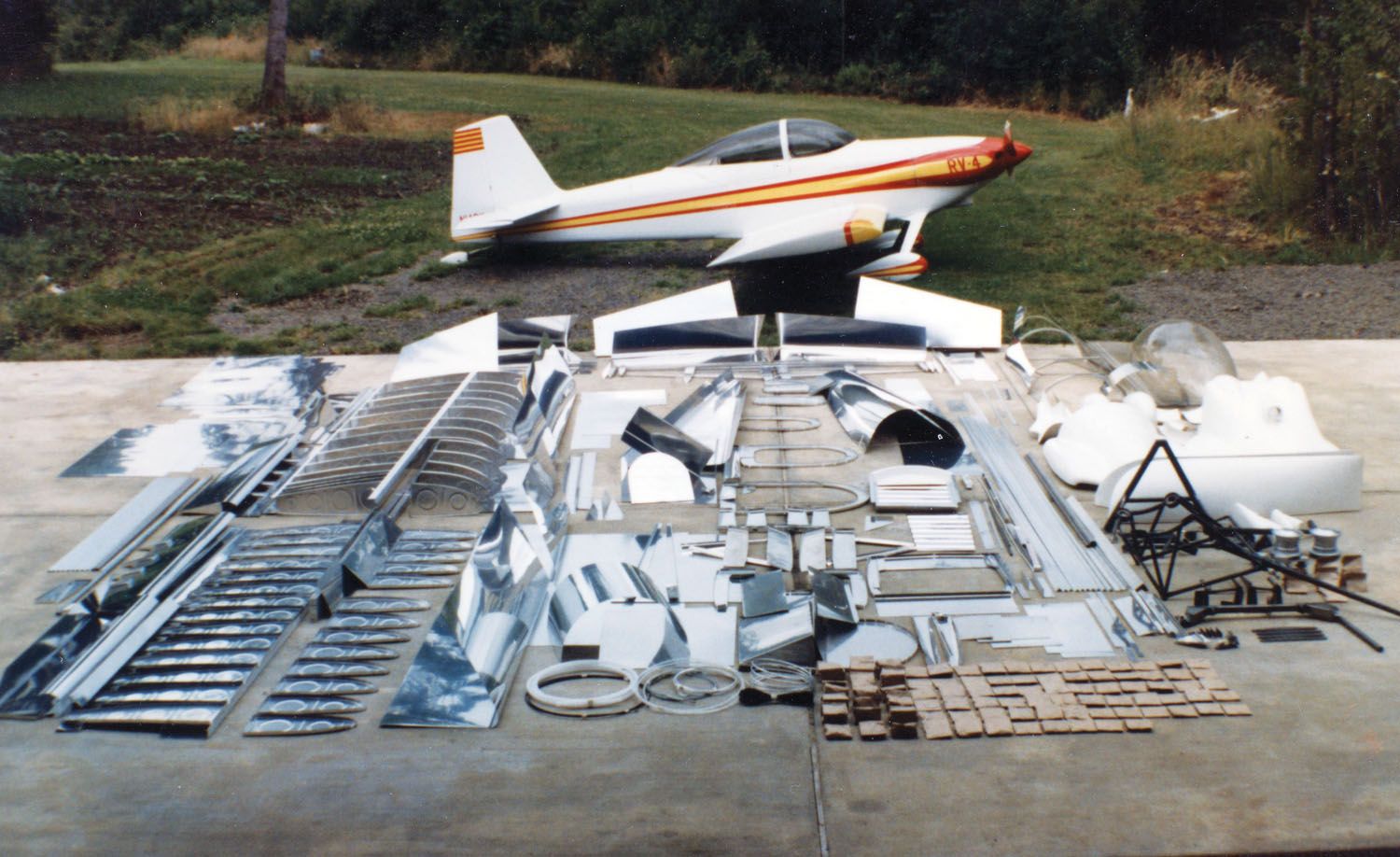
Wag-Aero Sportsman 2+2
Getting your kit components under $25,000 for a one- or two-place airplane is a challenge enough, but getting something with four seats that starts in the budget basement (so to speak) is fairly impressive. That’s the Wag-Aero Sportsman 2+2. It’s not a new design by any means, but a reproduction of Piper’s PA-14 Family Cruiser aircraft. That means a basic tube-and-fabric design, taildragger configuration and some form of four-cylinder Lycoming up front; Wag-Aero says power from 125 to 200 hp will do.
Performance reflects wing area and utility, meaning cruise is in the 120–125 mph range, with added horsepower adding most to rate of climb and shortening the takeoff roll. Maximum gross weight is 2200 pounds with an empty weight around 1100. Here’s another one where if you build it light you’ll be rewarded with impressive carrying capacity. Standard fuel is 39 gallons, generous with an O-320 up front. Handling is straightforward and very Piper-like. Wag-Aero allows you to choose among various options, like a fully welded or merely tack-welded fuselage frame, so if you have the skills to complete that part of the project, you can put more of your budget elsewhere.
Zenith Aircraft CH 650
Here’s another manufacturer capable of producing several of its basic kits at or below our $25K threshold. Thanks to the simplicity of design across the board and simple-to-manufacture aluminum structures, the Zenith kits lend themselves to low-cost builds. And this is despite the company’s extensive use of match-hole tooling—where the metal pieces fit together only one way—and blind pull rivets, which are much easier for neophyte builders to work with, albeit more expensive than conventional driven rivets. One advantage for the bottom line is that builders don’t need quite as extensive a tool set.
We’re highlighting the CH 650 in part because it’s become a little overshadowed by the high-wing CH 701 and 750 designs. Zenith says the 650 will cruise at 155–160 mph true airspeed at 8000 feet on around 100 hp. Like most Zenith models, the 650 can use a wide range of engines, with support for the Jabiru 3300, Rotax 912S, ULPower, Continental O-200 and Lycoming O-235. Although a bit heavier, the O-200 and O-235 options may be a tantalizing choice since these engines are more widely available used than either the Jabiru or Rotax.
Photos: Richard VanderMeulen and courtesy of the manufacturers.


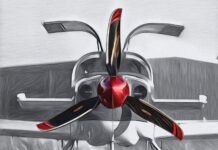

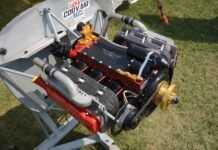
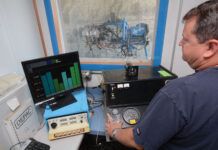
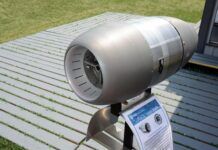
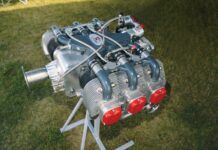
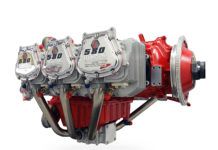
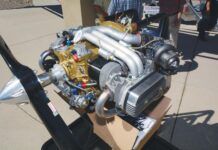

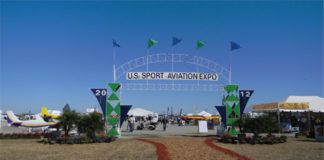
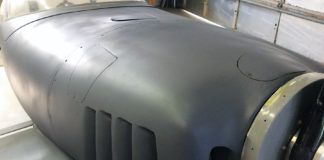

I’m not sure what the point is of including models that don’t have at least one a year added to the FAA registry??
All the ones I could think of off the top of my head are here. Good list.
No Kitfox? No Avid?
Kitfox’s least expensive kit at the time was above the threshold, and Avid is no longer in business.
Very clearly stated that the kitfox model IV is no longer offered. The only model that was under 25K
How much would a Tailwind with a Corvair engine cost?
You might want to have included build times in your discussion.
That was so good.I was planning to build my own homemade airplane.But one should take aviation course before start building it. Where else can I take such a course? Is there any online course? If there is then can you please suggest websites or institutions that give such a course?
Go to a small local airfield and check around. There are computer ground school software that should bring you up to speed for the book learning but you will need to get instruction in flying at least in something similar that you wish to build. Tail draggers are planes like the J3 and Champ of bygone years. Then there are the Cessna 150 types.Tricycle gear is much different than learning on a tail dragger. I did both and solo flew both gear types before 40 hrs.
Are there any plans / kit for the Hartfield Little Bird Two ? Several You Tube post in this design. Seems like a good design to be battery powered.
So many planes so little time
Great selection of aircraft presented here. It’s interesting to note that most involve an investment of $35k-$50k dollars and countless hours to construct. Some factory-built airplanes can be had for less than that and you can be flying TODAY. It’s just something to think about. Many of these projects are started and are handed off to many other builders along the way before they take to the skies. But if you’re tenacious and realize you may sped DOUBLE your original estimate, have at it! .
Small note: The kR1/KR2/KR2S we’re never “all-wood” aircraft. From the very beginning they used foam and fiberglass construction for the wings and empennage. It’s best to use an 0-200 if you plan on building one.
Great Comment. Thank You Carson
Do you have an airplane that is under $2,000
Sorry I meant to say under $1,000
None that come to mind, sorry.
Hi Marc,
Have you heard of any kits that are built to support an electric engine? Do you think any of the ones on this list might be good fits for that kind of innovation?
Sonex has been supporting electric propulsion for the Xenos motorglider. But that’s about it from this group.